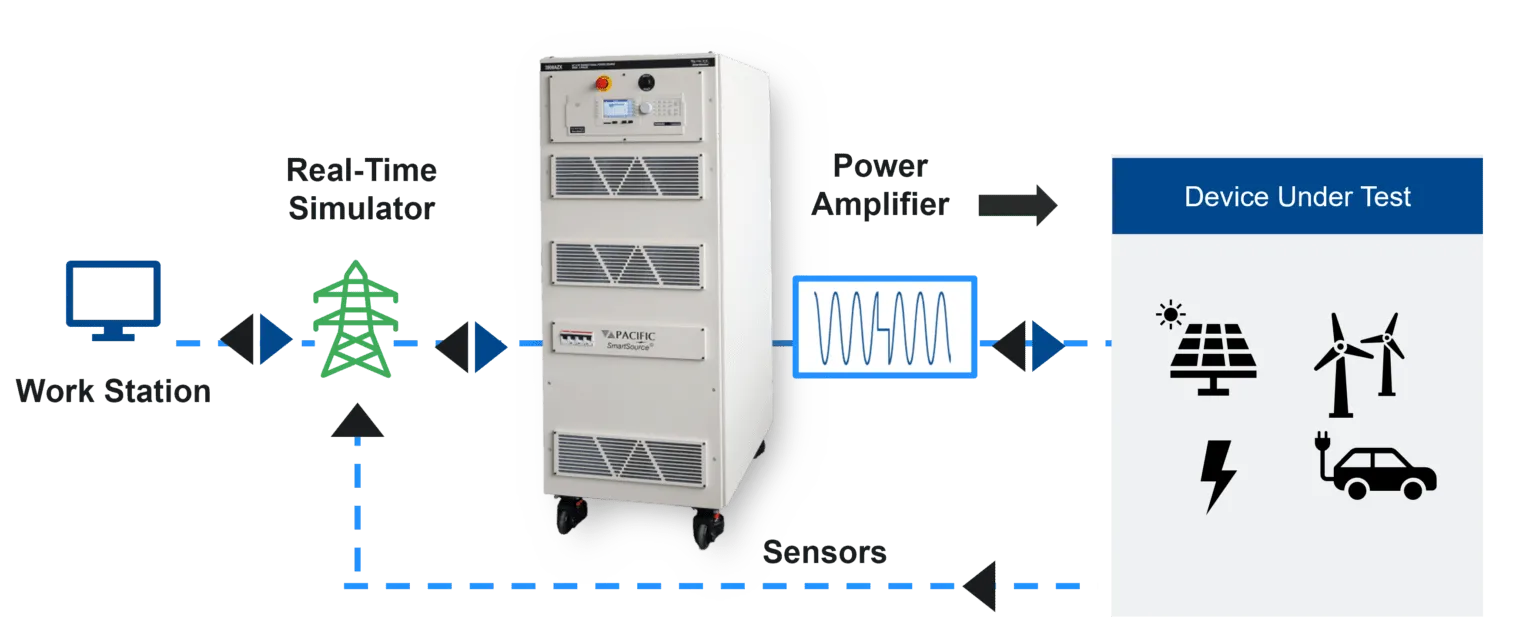Testing Using Power Hardware in the Loop

What is Power Hardware in the Loop?
Power-Hardware-in-the-Loop (PHIL) allows users to perform realistic closed loop tests without the need for testing on a real system. PHIL provides a real-time simulation environment through the exchange of low voltage/current signals that can be employed for the higher power testing required by the Unit Under Test (UUT). To this end, a power amplifier is used in between the UUT and the low-level simulator I/O to provide close-loop feedback between the simulation and the physical UUT. A power amplifier is selected based on their close-loop performance and ability to generate or to sink power.
Why is PHIL important for Testing?
PHIL shortens the design cycle by simulating control algorithms on the Real Time System (RTS), which uses a transient approach that provides instantaneous voltages and currents.
This workflow allows for accurate emulation of a physical power plant and a multitude of loads. The high-fidelity simulation provides the flexibility to apply tests that are not practical on a real testbed which is ideal for testing R&D, inter-operability of loads and prototyping applications, safely.
PHIL is a powerful testing capability for the testing and validation of power components and systems with higher power flow between the UUTs. Ideal applications include testing grid-tied inverters for compliance to IEEE 1547.1, UL1741 and similar global standards.
Key Application Examples
- Aerospace and Defense
- Electric Vehicles
- Electric Motor Drives
- Renewable Energy
- Microgrids, PV inverters, Utility Grid, Wind Turbines
- Marine and Offshore Power Systems
- Industrial Automation and Manufacturing, Robotics
- Universities, Research Labs




